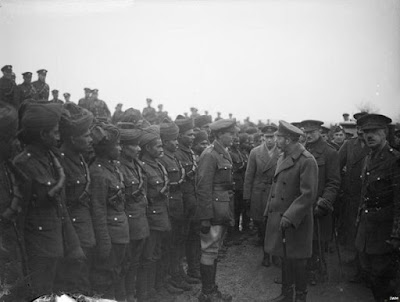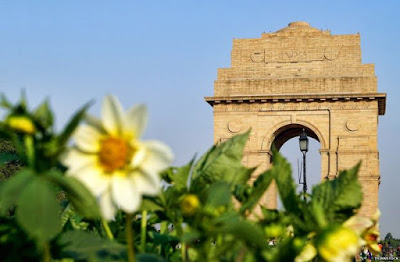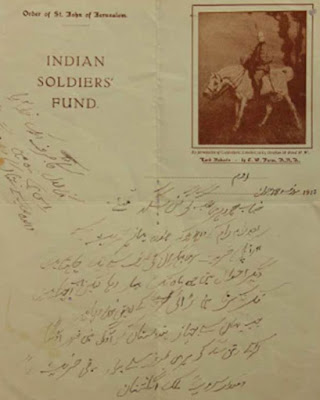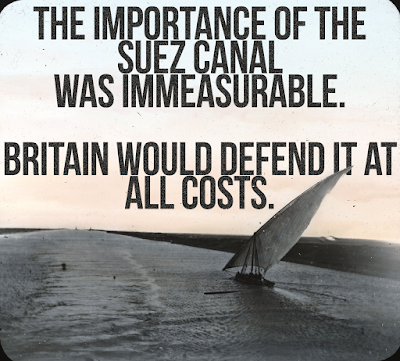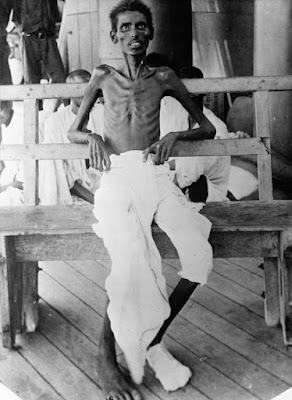2 July 2015
IWM
Approximately 1.3 million Indian soldiers served in World War One, and over 74,000 of them lost their lives. But history has mostly forgotten these sacrifices, which were rewarded with broken promises of Indian independence from the British government, writes Shashi Tharoor.
The role and sacrifices of Australians, New Zealanders, Canadians and South Africans have been celebrated for some time in books and novels, and even rendered immortal on celluloid in award-winning films like Gallipoli. Of the 1.3 million Indian troops who served in the conflict, however, you hear very little.
IWM
Approximately 1.3 million Indian soldiers served in World War One, and over 74,000 of them lost their lives. But history has mostly forgotten these sacrifices, which were rewarded with broken promises of Indian independence from the British government, writes Shashi Tharoor.
Exactly
100 years after the "guns of August" boomed across the European
continent, the world has been extensively commemorating that seminal event. The
Great War, as it was called then, was described at the time as "the war to
end all wars". Ironically, the eruption of an even more destructive
conflict 20 years after the end of this one meant that it is now known as the
First World War. Those who fought and died in the First World War would have
had little idea that there would so soon be a Second.
But while
the war took the flower of Europe's youth to its premature grave, snuffing out
the lives of a generation of talented poets, artists, cricketers and others
whose genius bled into the trenches, it also involved soldiers from faraway
lands that had little to do with Europe's bitter traditional hatreds.
The role and sacrifices of Australians, New Zealanders, Canadians and South Africans have been celebrated for some time in books and novels, and even rendered immortal on celluloid in award-winning films like Gallipoli. Of the 1.3 million Indian troops who served in the conflict, however, you hear very little.
As many
as 74,187 Indian soldiers died during the war and a comparable number were
wounded. Their stories, and their heroism, have long been omitted from popular
histories of the war, or relegated to the footnotes.
India
contributed a number of divisions and brigades to the European, Mediterranean,
Mesopotamian, North African and East African theatres of war. In Europe, Indian
soldiers were among the first victims who suffered the horrors of the trenches.
They were killed in droves before the war was into its second year and bore the
brunt of many a German offensive.
It was
Indian jawans (junior soldiers) who stopped the German advance at Ypres
in the autumn of 1914, soon after the war broke out, while the British were
still recruiting and training their own forces. Hundreds were killed in a
gallant but futile engagement at Neuve Chappelle. More than 1,000 of them died
at Gallipoli, thanks to Churchill's folly. Nearly 700,000 Indian sepoys
(infantry privates) fought in Mesopotamia against the Ottoman Empire, Germany's
ally, many of them Indian Muslims taking up arms against their co-religionists
in defence of the British Empire.
The most
painful experiences were those of soldiers fighting in the trenches of Europe.
Letters sent by Indian soldiers in France and Belgium to their family members
in their villages back home speak an evocative language of cultural dislocation
and tragedy. "The shells are pouring like rain in the monsoon,"
declared one. "The corpses cover the country, like sheaves of harvested
corn," wrote another.
IWM Image
caption King George V inspecting Indian troops at Le Cateau in 1918
These men
were undoubtedly heroes - pitchforked into battle in unfamiliar lands, in harsh
and cold climatic conditions they were neither used to nor prepared for,
fighting an enemy of whom they had no knowledge, risking their lives every day
for little more than pride. Yet they were destined to remain largely unknown
once the war was over: neglected by the British, for whom they fought, and
ignored by their own country, from which they came.
Part of
the reason is that they were not fighting for their own country. None of the
soldiers was a conscript - soldiering was their profession. They served the
very British Empire that was oppressing their own people back home.
The
British raised men and money from India, as well as large supplies of food,
cash and ammunition, collected both by British taxation of Indians and from the
nominally autonomous princely states. In return, the British had insincerely
promised to deliver progressive self-rule to India at the end of the war.
Perhaps, had they kept that pledge, the sacrifices of India's First World War
soldiers might have been seen in their homeland as a contribution to India's
freedom.
But the
British broke their word. Mahatma Gandhi, who returned to his homeland for good
from South Africa in January 1915, supported the war, as he had supported the
British in the Boer War. The great Nobel Prize-winning poet, Rabindranath
Tagore, was somewhat more sardonic about nationalism. "We, the famished,
ragged ragamuffins of the East are to win freedom for all humanity!" he
wrote during the war. "We have no word for 'nation' in our language."
India was
wracked by high taxation to support the war and the high inflation accompanying
it, while the disruption of trade caused by the conflict led to widespread
economic losses - all this while the country was also reeling from a raging
influenza epidemic that took many lives. But nationalists widely understood
from British statements that at the end of the war India would receive the
Dominion Status hitherto reserved for the "White Commonwealth".
Getty
Images Troops on the beach on Cape Helles as stores are being
unloaded during the Gallipoli Campaign
It was
not to be. When the war ended in triumph for Britain, India was denied its
promised reward. Instead of self-government, the British imposed the repressive
Rowlatt Act, which vested the Viceroy's government with extraordinary powers to
quell "sedition" against the Empire by silencing and censoring the
press, detaining political activists without trial, and arresting without a
warrant any individuals suspected of treason against the Empire. Public
protests against this draconian legislation were quelled ruthlessly. The worst
incident was the Jallianwallah Bagh massacre of April 1919, when
Brigadier-General Reginald Dyer ordered his troops to fire without warning on
15,000 unarmed and non-violent men, women and children demonstrating peacefully
in an enclosed garden in Amritsar, killing as many as 1,499 and wounding up to
1,137.
The fact
that Dyer was hailed as a hero by the British, who raised a handsome purse to
reward him for his deed, marked the final rupture between British imperialism
and its Indian subjects. Sir Rabindranath Tagore returned his knighthood to the
British in protest against "the helplessness of our position as British
subjects in India". He did not want a "badge of honour" in
"the incongruous context of humiliation".
With
British perfidy providing such a sour ending to the narrative of a war in which
India had given its all and been spurned in return, Indian nationalists felt
that the country had nothing to thank its soldiers for. They had merely gone
abroad to serve their foreign masters. Losing your life or limb in a foreign
war fought at the behest of your colonial rulers was an occupational hazard -
it did not qualify to be hailed as a form of national service.
British Library Image caption English and Indian soldiers of the
Lucknow Cavalry Brigade relaxing in a farmyard at HQ, 1915
Or so
most Indian nationalists thought, and they allowed the heroism of their compatriots
to be forgotten. When the world commemorated the 50th anniversary of the First
World War in 1964, there was scarcely a mention of India's soldiers anywhere,
least of all in India.
India's
absence from the commemorations, and its failure to honour the dead, were not a
major surprise. Nor was the lack of First World War memorials in the country:
the general feeling was that India, then freshly freed from the imperial yoke,
was ashamed of its soldiers' participation in a colonial war and saw nothing to
celebrate.
The
British, however, went ahead and commemorated the war by constructing the
triumphal arch known as India Gate in New Delhi. India Gate, built in 1931, is
a popular monument, visited by hundreds daily who have no idea that it
commemorates the Indian soldiers who lost their lives fighting in World War
One.
Thinkstock
India Gate memorial to WW1 soldiers, Delhi
In the
absence of a national war memorial, many Indians like myself see it as the only
venue to pay homage to those who have lost their lives in more recent
conflicts. I have stood there many times, on the anniversaries of wars with
China and Pakistan, and bowed my head without a thought for the men who died in
foreign fields a century ago.
As a
member of parliament, I twice raised the demand for a national war memorial
(after a visit to the hugely impressive Australian one in Canberra) and was
told there were no plans to construct one here. It was therefore personally
satisfying to me, and to many of my compatriots, when the government of India
announced in its budget for 2014-15 its intention finally to create a national
war memorial. We are not a terribly militaristic society, but for a nation that
has fought many wars and shed the blood of many heroes, and whose resolve may
yet be tested in conflicts to come, it seems odd that there is no memorial to
commemorate, honour and preserve the memories of those who have fought for
India.
The
centenary is finally forcing a rethink. Remarkable photographs have been
unearthed of Indian soldiers in Europe and the Middle East, and these are
enjoying a new lease of life online. Looking at them, I find it impossible not
to be moved - these young men, visibly so alien to their surroundings, some
about to head off for battle, others nursing terrible wounds. My favourite
picture is of a bearded and turbaned Indian soldier on horseback in Mesopotamia
in 1918, leaning over in his saddle to give his rations to a starving local
peasant girl. This spirit of compassion has been repeatedly expressed by Indian
peacekeeping units in United Nations operations since, from helping Lebanese
civilians in the Indian battalion's field hospital to treating the camels of
Somali nomads during the UN operation there. It embodies the ethos the Indian
solider brings to soldiering, whether at home or abroad.
IWM Indian cavalryman hands rations to starving Christian girls
For many
Indians, curiosity has overcome the fading colonial-era resentments of British
exploitation. We are beginning to see the soldiers of World War One as human
beings, who took the spirit of their country to battlefields abroad. The Centre
for Armed Forces Historical Research in Delhi is painstakingly working to
retrieve memorabilia of that era and reconstruct the forgotten story of the 1.3
million Indian soldiers who served in the First World War. Some of the letters
are unbearably poignant, especially those urging relatives back home not to
commit the folly of enlisting in this futile cause. Others hint at delights
officialdom frowned upon - some Indian soldiers' appreciative comments about
the receptivity of Frenchwomen to their attentions, for instance.
Astonishingly,
almost no fiction has emerged from or about the perspective of the Indian
troops. An exception is Mulk Raj Anand's Across the Black Waters, the tale of a
sepoy, Lalu, dispossessed from his land, fighting in a war he cannot
understand, only to return to his village to find he has lost everything and
everyone who mattered to him. The only other novel I have read about Indians in
the war, John Masters' The Ravi Lancers, inevitably is a Briton's account,
culminating in an Indian unit deciding to fight on in Europe "because we
gave our word to serve".
Dear Father...
Other
This
letter was written by an Indian soldier, Ram Singh (soldier in the Garhwal
Rifles) from the Kitchener Indian Hospital in Brighton, to his father. The
original letter (pictured) was censored and is held by Professor KC Yadav,
Gurgaon/India. The British Library has put the translations of a
number of letters from Indian soldiers online, including this one.
Ram Singh
acknowledges that letters are being censored. "We're not allowed to write
about the war," he writes. He complains how difficult the war was proving
to be. He writes that the information printed in the newspapers was lies,
implying that the stories of progress made in capturing ground were
exaggerated, when in fact they had "only captured 400 yards of
trenches".
Source: British
Library
But
Indian literature touched the war experience in one tragic tale. When the great
British poet Wilfred Owen (author of the greatest anti-war poem in the English
language, Dulce et Decorum Est) was to return to the front to give his life in
the futile First World War, he recited Tagore's Parting Words to his mother as
his last goodbye. When he was so tragically and pointlessly killed, Owen's
mother found Tagore's poem copied out in her son's hand in his diary:
When I go
from hence
let this
be my parting word,
that what
I have seen is unsurpassable.
I have
tasted of the hidden honey of this lotus
that
expands on the ocean of light,
and thus
am I blessed
---let
this be my parting word.
In this
playhouse of infinite forms
I have
had my play
and here
have I caught sight of him that is formless.
My whole
body and my limbs
have
thrilled with his touch who is beyond touch;
and if
the end comes here, let it come
- let
this be my parting word.
The
Commonwealth War Graves Commission maintains war cemeteries in India, mostly
commemorating the Second World War rather than the First. The most famous
epitaph of them all is inscribed at the Kohima War Cemetery in North-East
India. It reads, "When you go home, tell them of us and say/ For your
tomorrow, we gave our today".
The
Indian soldiers who died in the First World War could make no such claim. They
gave their "todays" for someone else's "yesterdays". They
left behind orphans, but history has orphaned them as well. As Imperialism has
bitten the dust, it is recalled increasingly for its repression and racism, and
its soldiers, when not reviled, are largely regarded as having served an
unworthy cause.
But they
were men who did their duty, as they saw it. And they were Indians. It is a
matter of quiet satisfaction that their overdue rehabilitation has now begun.
Source: bbc


